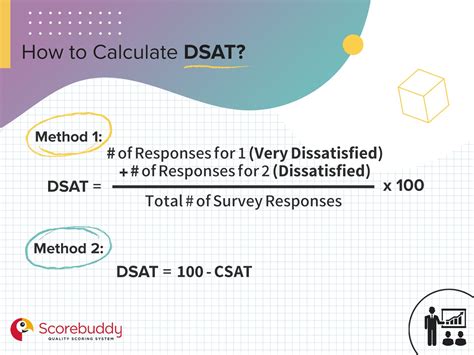Introduction
Data science aptitude tests (DSATs) are increasingly used by employers to assess candidates’ skills and knowledge in data science. These tests typically cover a wide range of topics, including:

- Data analysis and interpretation
- Statistical modeling
- Machine learning
- Data mining
- Big data technologies
Candidates who score well on DSATs are more likely to be successful in data science roles. This reference sheet provides a comprehensive overview of the key concepts covered on DSATs, as well as tips on how to prepare for these tests.
Data Analysis and Interpretation
Data analysis is the process of cleaning, transforming, and analyzing data to extract meaningful insights. Candidates should be familiar with the following concepts:
- Data types (e.g., numeric, categorical, text)
- Data structures (e.g., arrays, matrices, data frames)
- Data visualization techniques (e.g., histograms, scatterplots, boxplots)
- Statistical measures (e.g., mean, median, standard deviation)
Why it Matters: Data analysis is essential for understanding the underlying patterns and trends in data. It allows businesses to make informed decisions based on data-driven insights.
Benefits: Data analysis can improve business efficiency, reduce costs, and increase revenue.
Statistical Modeling
Statistical modeling is the process of using statistical techniques to predict future outcomes. Candidates should be familiar with the following concepts:
- Linear regression
- Logistic regression
- Decision trees
- Random forests
- Support vector machines
Why it Matters: Statistical modeling allows businesses to make predictions about future events, which can help them to make better decisions.
Benefits: Statistical modeling can help businesses to identify opportunities, mitigate risks, and optimize operations.
Machine Learning
Machine learning is a subfield of artificial intelligence that allows computers to learn from data without being explicitly programmed. Candidates should be familiar with the following concepts:
- Supervised learning
- Unsupervised learning
- Reinforcement learning
- Deep learning
- Natural language processing
Why it Matters: Machine learning is revolutionizing a wide range of industries, from healthcare to finance. It allows businesses to automate tasks, improve decision-making, and create new products and services.
Benefits: Machine learning can help businesses to increase efficiency, reduce costs, and gain a competitive advantage.
Data Mining
Data mining is the process of extracting hidden patterns and insights from large datasets. Candidates should be familiar with the following concepts:
- Association rules
- Classification
- Clustering
- Market segmentation
Why it Matters: Data mining can help businesses to identify new opportunities, understand customer behavior, and improve marketing campaigns.
Benefits: Data mining can help businesses to increase sales, improve customer satisfaction, and reduce churn.
Big Data Technologies
Big data technologies are used to store, process, and analyze large datasets. Candidates should be familiar with the following concepts:
- Hadoop
- Spark
- Hive
- Pig
- NoSQL databases
Why it Matters: Big data technologies have made it possible to store and analyze vast amounts of data, which can lead to new insights and breakthroughs.
Benefits: Big data technologies can help businesses to improve decision-making, reduce costs, and gain a competitive advantage.
Preparing for DSATs
The best way to prepare for DSATs is to practice as much as possible. There are a number of online resources that provide practice tests and sample questions. Candidates should also focus on the following:
- Reviewing the key concepts covered on DSATs
- Developing strong analytical and problem-solving skills
- Gaining experience with data analysis software and tools
Conclusion
DSATs are increasingly used by employers to assess candidates’ skills and knowledge in data science. This reference sheet provides a comprehensive overview of the key concepts covered on DSATs, as well as tips on how to prepare for these tests. By following the advice in this reference sheet, candidates can improve their chances of scoring well on DSATs and landing their dream data science job.
Additional Resources
- Data Science Aptitude Test Practice Questions
- How to Prepare for a Data Science Aptitude Test
- Top 10 Tips for Scoring Well on a DSAT
Tables
Table 1: Key Concepts Covered on DSATs
| Topic | Concepts |
|---|---|
| Data Analysis and Interpretation | Data types, data structures, data visualization techniques, statistical measures |
| Statistical Modeling | Linear regression, logistic regression, decision trees, random forests, support vector machines |
| Machine Learning | Supervised learning, unsupervised learning, reinforcement learning, deep learning, natural language processing |
| Data Mining | Association rules, classification, clustering, market segmentation |
| Big Data Technologies | Hadoop, Spark, Hive, Pig, NoSQL databases |
Table 2: Benefits of Data Science
| Benefit | Impact |
|---|---|
| Improved decision-making | Reduced costs, increased revenue |
| Increased efficiency | Reduced time to market, improved customer service |
| Competitive advantage | New products and services, increased market share |
Table 3: Tips for Preparing for DSATs
| Tip | Benefit |
|---|---|
| Practice as much as possible | Improved test-taking skills |
| Review the key concepts | Increased knowledge and understanding |
| Develop strong analytical and problem-solving skills | Improved ability to solve DSAT questions |
| Gain experience with data analysis software and tools | Increased confidence and proficiency |
Table 4: Resources for Preparing for DSATs
| Resource | Link |
|---|---|
| Data Science Aptitude Test Practice Questions | https://www.datasciencecentral.com/profiles/blogs/data-science-aptitude-test-practice-questions |
| How to Prepare for a Data Science Aptitude Test | https://www.springboard.com/blog/prepare-for-data-science-aptitude-test/ |
| Top 10 Tips for Scoring Well on a DSAT | https://www.careercup.com/resume-review/top-10-tips-for-scoring-well-on-a-dsat |
